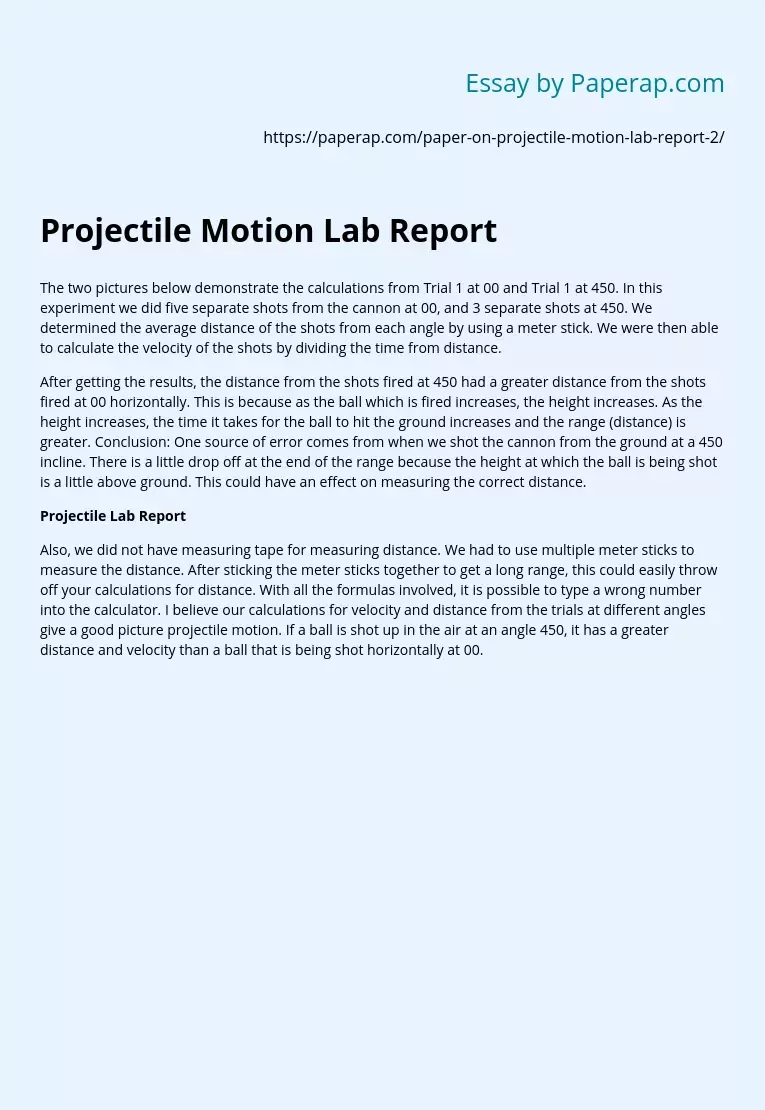Cannon Experiment Trial 1 Comparison
The two pictures below demonstrate the calculations from Trial 1 at 00 and Trial 1 at 450. In this experiment we did five separate shots from the cannon at 00, and 3 separate shots at 450. We determined the average distance of the shots from each angle by using a meter stick. We were then able to calculate the velocity of the shots by dividing the time from distance.
After getting the results, the distance from the shots fired at 450 had a greater distance from the shots fired at 00 horizontally.
This is because as the ball which is fired increases, the height increases. As the height increases, the time it takes for the ball to hit the ground increases and the range (distance) is greater. Conclusion: One source of error comes from when we shot the cannon from the ground at a 450 incline. There is a little drop off at the end of the range because the height at which the ball is being shot is a little above ground.
This could have an effect on measuring the correct distance.
Projectile Lab Report
Also, we did not have measuring tape for measuring distance. We had to use multiple meter sticks to measure the distance. After sticking the meter sticks together to get a long range, this could easily throw off your calculations for distance. With all the formulas involved, it is possible to type a wrong number into the calculator. I believe our calculations for velocity and distance from the trials at different angles give a good picture projectile motion.
If a ball is shot up in the air at an angle 450, it has a greater distance and velocity than a ball that is being shot horizontally at 00.
Cannon Experiment Trial 1 Comparison. (2019, Dec 05). Retrieved from https://paperap.com/paper-on-projectile-motion-lab-report-2/

